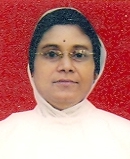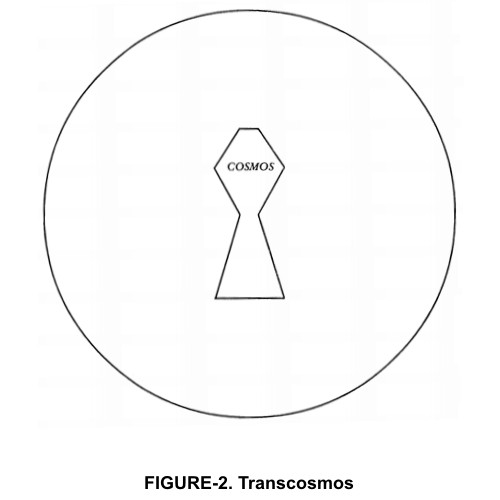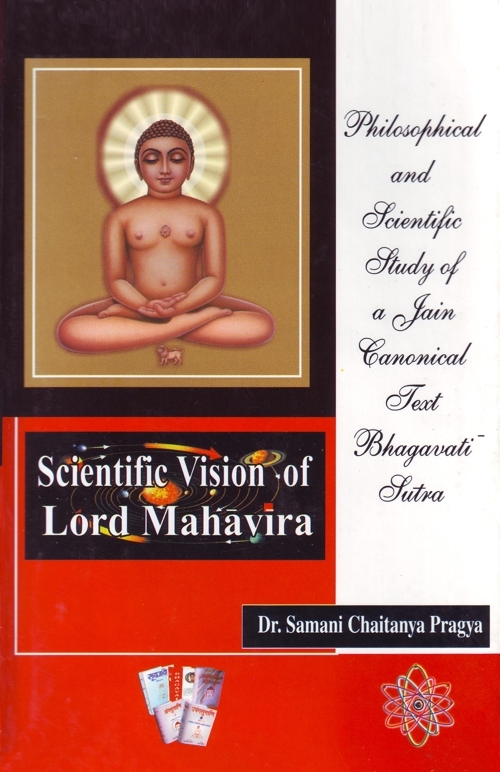From the definitions given above it is quite clear that the entire universe is comprised of five or six entities. All of them are eternal, uncreated and co-existent.[9] Consequently, the universe has no beginning and will never come to an end.[10] The same applies to the supra-universe. Thus, both universe or supra-universe are eternal and co-existent. The questions of priority and posteriority also have no meaning to them. The question regarding their prior or poterior existence was raised by the ascetic Ārya Roha before the Lord Mahāvira. Ārya Roha asked:
"Was the universe, O Lord, in existence before the supra-universe or the supra-universe was before the universe?"
"O Roha! the cosmos and the transcosmos were both before as well as after—both are eternal; there is no temporal sequence."[11]
To support the fact, the Bh.S mentions four kinds of universe, viz., 1. dravyaloka i.e. the universe of substance, 2. kṣetraloka i.e. the universe of space, 3. kālaloka i.e. the universe of time, 4. bhāvaloka i.e. the universe of mode.[12] In this reference, from the standpoint of kāla i.e. time the universe has clearly been described without beginning and end. It is ever existent because there is no point of time at which the universe does not exist. It was, it is and it will be. It is eternal, perennial, permanent, indestructible, imperishable, ever-present and persistent.[13]
Regarding the beginning and end of the universe the same view is found in all other Jain canonical[14] and philosophical treatises.[15]
Moreover, the division of the cosmos and transcosmos is also natural and beginningless. No Divine Being created it. The existence of cosmos in one form or another has been accepted by almost all religio-philosophical systems. But the concept of transcosmos is quite unique and found only in the Jain philosophy. This unique idea of universe and supra-universe, according to Acharya Mahapragya, has given rise to the doctrine of thesis and antithesis as well as contrary twins. The principle, underlying such a doctrine is the doctrine of Anekant.[16]
Along with the above facts of the universe Bh.S also speaks of the beginning of the border of the cosmos, whether it exists before or after the transcosmos?[17] Whether the border exists before the seventh interspace (discussed latter) or the seventh interspace exists before the border? Similarly the questions have been raised regarding the prior existence of the border, the interspace and the layers situated before the seventh infernal world i.e. pitch dark.[18]
The answers given by Lord Mahāvīra in relation to the querries are more or less similar, that is, all layers and the border of the cosmos exist before as well as after. All are eternal. There is no temporal sequence among them.[19]From the conversation it becomes clear that the building principles that build up the universe are without beginning. The principles discussed above are six in number, viz. cosmos, transcosmos, interspace, the rings of the thin air, dense air and dense ocean, and the nether earths. The transcosmos is like an empty sphere which spreads all around the cosmos.[20](See figure-2). The cosmos is like a patch stitched on the surface of the transcosmos.[21]This model of the universe comes quite close to the view of modern Physics. Accordingly, the explicit order of the universe floats on the implicit order of the universe just like a set of bubbles on the surface of water.[22]So far as the conceptions of interspace, the ring of thin air etc. and the nether earths are concerned, these are all quite new and provide scope for scientific researches.(See figure-9)
The concept of interspace is not only new but scientifically importnt also. In Jain Physics an interspace is simply a synonym of space.[23]The view of interspace lying between two nether regions resembles to the discovery of interspace or vaccums in the domain of Physics. Accordingly, there is an interspace in each entity. The atom is not devoid of the interspace. An atom has two parts, one consisting of electrons and the other nucleus which is made up of protons and neutrons. There is interspace between all of them. If the interspace is taken out of all the constituents of the universe, then the size of the universe will shrink to that of a small ball.[24]
The postulation of beginningless origination of the world presented by the Jains is philosophically important. In his commentary, Abhayadeva Sūri showing its philosophical importance writes, the aforesaid queries and the answers given refute nihilism, idealism and creator God and establish the doctrine of beginningless creation of the universe.[25]
So far as the origin of the universe in science is concerned, there are some theories which emerge especially to explain the beginning of the universe. They accept its beginning at some point of time. The most accepted scientific theory about the origin of the universe is Big Bang. Alexander Friendmann and Abbe George Lemaitre proposed the theory in 1920. George Gamov and his colleagues developed its modern version in 1940. According to the theory, the universe began some 10 to 20 billion years ago. There was a cosmic egg that was infinitely hot. The egg was compressed to infinite density with a gigantic explosion and went on expanding. All elementary particles were created within a fraction of a second after the explosion. Space and time also originated with Big Bang. According to the modern science, the universe is still expanding. The distant galaxies have been found receding from us with a velocity in direct proportion to their distance from an observer on earth. Eventually the expansion of the universe will stop at some point and it will begin to contract under the gravitational pull of its parts and then again get condensed into a superhot tiny ball which it was in the beginning. Following which there will be a Big Bang again and the process of expansion and contraction will continue indefinitely in a cyclic manner. In this whole process matter is neither created nor destroyed but is merely rearranged.[26]
Bh.S; 1/6/291—jīvā ya ajīvā ya puvviṃ pete, pacchā pete—do vete sāsayā bhāvā, aṇāṇupuvvi esā Rohā!
Bh.S; 1/6/290—loe ya aloe ya puvviṃ pete, pacchā pete—do vete sāsayā bhāvā,
aṇāṇupuvvi esā Rohā!Bh.S; 2/1/45—kālao ṇaṃ loe na kayāi na āsi, na kayāi na bhavai, na kayāi na bhavissai—bhaviṅsu ya, bhavati ya, bhavissai ya............
Bh.S; 1/6/296—loyante ya aloyante ya puvviṃ pete, pacchā pete—do vete sāsayā bhāvā, aṇāṇupuvvi esā Rohā!
Ibid., 1/6/297-298—Rohā! loyante ya sattame ovāsantare ya puvviṃ pete, pacchā pete—do vete sāsayā bhāvā, aṇāṇupuvvi esā Rohā!; evaṃ loyante ya sattame ya taṇuvāe evaṃ ghanavāe, ghanodahi..........
 Dr. Samani Chaitanya Pragya
Dr. Samani Chaitanya Pragya



